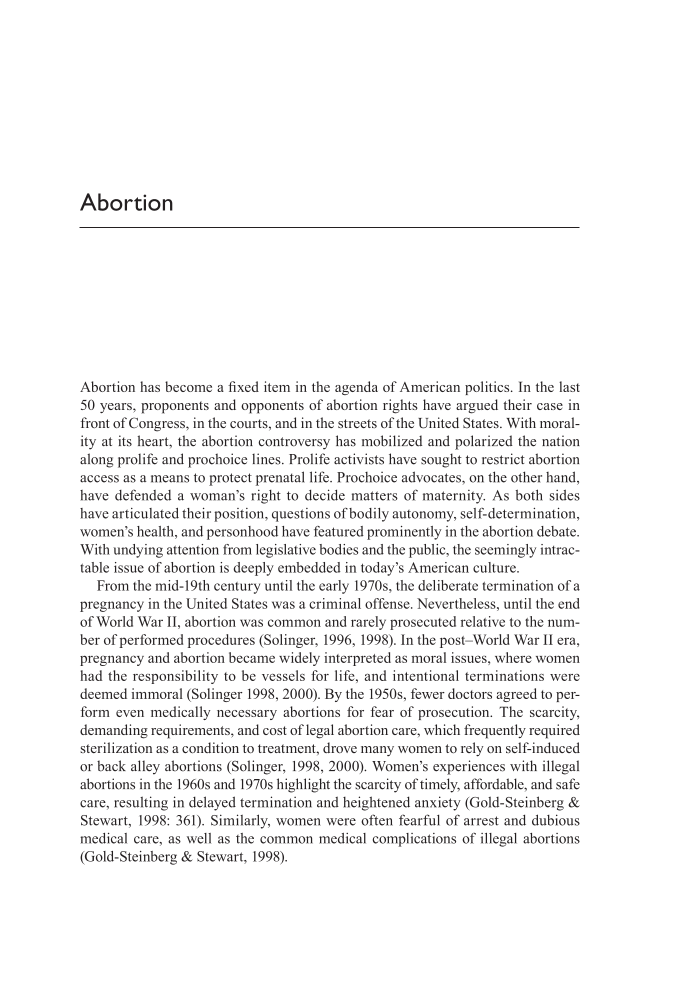Abortion Abortion has become a fixed item in the agenda of American politics. In the last 50 years, proponents and opponents of abortion rights have argued their case in front of Congress, in the courts, and in the streets of the United States. With moral- ity at its heart, the abortion controversy has mobilized and polarized the nation along prolife and prochoice lines. Prolife activists have sought to restrict abortion access as a means to protect prenatal life. Prochoice advocates, on the other hand, have defended a woman’s right to decide matters of maternity. As both sides have articulated their position, questions of bodily autonomy, self-determination, women’s health, and personhood have featured prominently in the abortion debate. With undying attention from legislative bodies and the public, the seemingly intrac- table issue of abortion is deeply embedded in today’s American culture. From the mid-19th century until the early 1970s, the deliberate termination of a pregnancy in the United States was a criminal offense. Nevertheless, until the end of World War II, abortion was common and rarely prosecuted relative to the num- ber of performed procedures (Solinger, 1996, 1998). In the post– World War II era, pregnancy and abortion became widely interpreted as moral issues, where women had the responsibility to be vessels for life, and intentional terminations were deemed immoral (Solinger 1998, 2000). By the 1950s, fewer doctors agreed to per- form even medically necessary abortions for fear of prosecution. The scarcity, demanding requirements, and cost of legal abortion care, which frequently required sterilization as a condition to treatment, drove many women to rely on self-induced or back alley abortions (Solinger, 1998, 2000). Women’s experiences with illegal abortions in the 1960s and 1970s highlight the scarcity of timely, affordable, and safe care, resulting in delayed termination and heightened anxiety (Gold- Steinberg & Stewart, 1998: 361). Similarly, women were often fearful of arrest and dubious medical care, as well as the common medical complications of illegal abortions (Gold- Steinberg & Stewart, 1998).
Document Details My Account Print multiple pages
Print
You have printed 0 times in the last 24 hours.
Your print count will reset on at .
You may print 0 more time(s) before then.
You may print a maximum of 0 pages at a time.























































































































































































































































































































